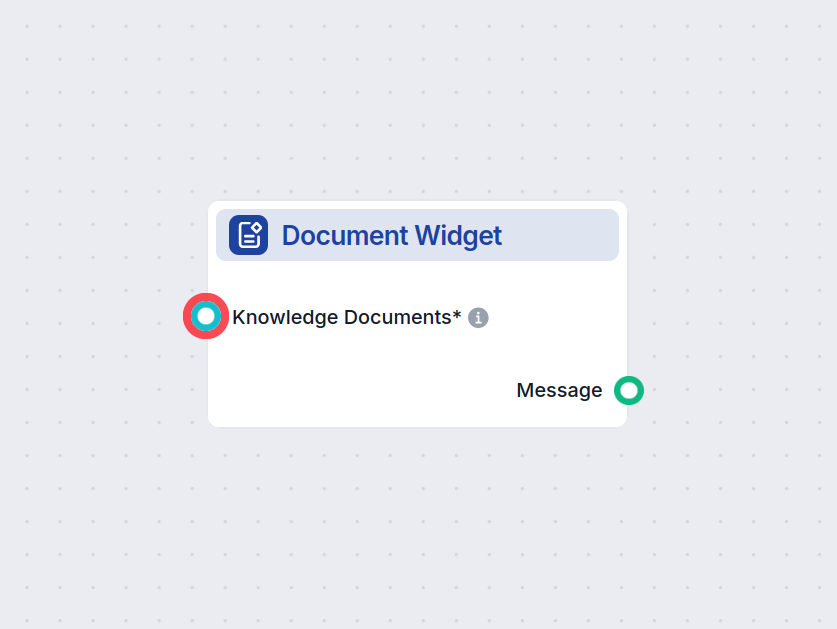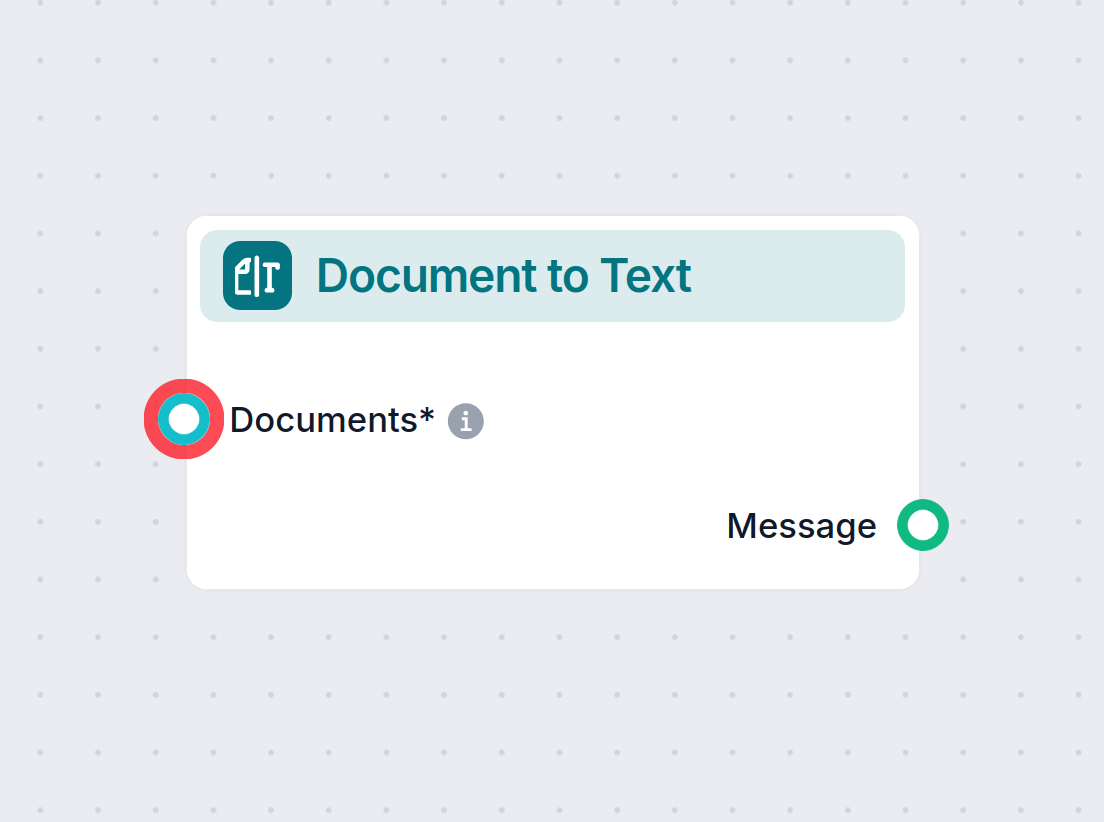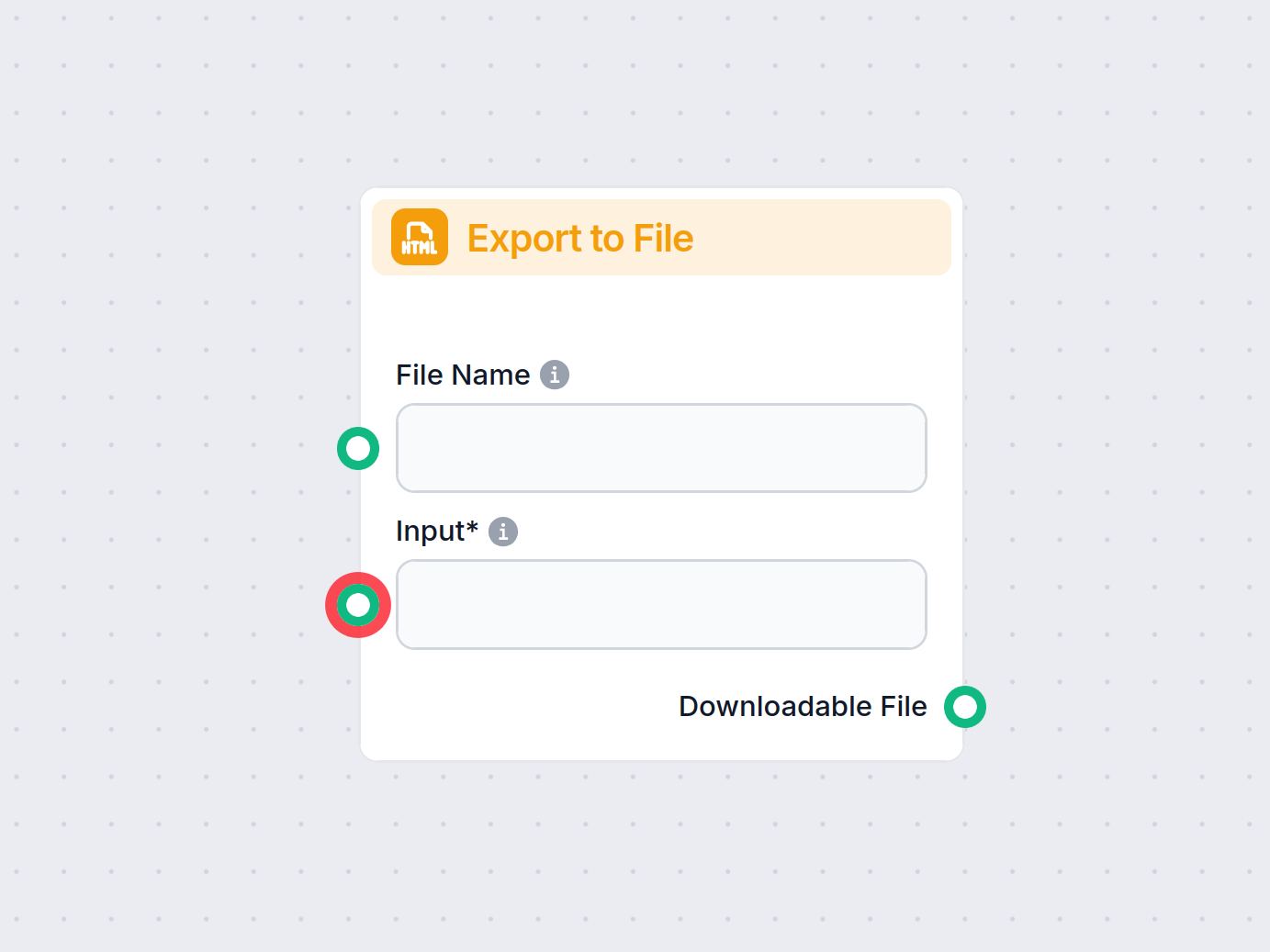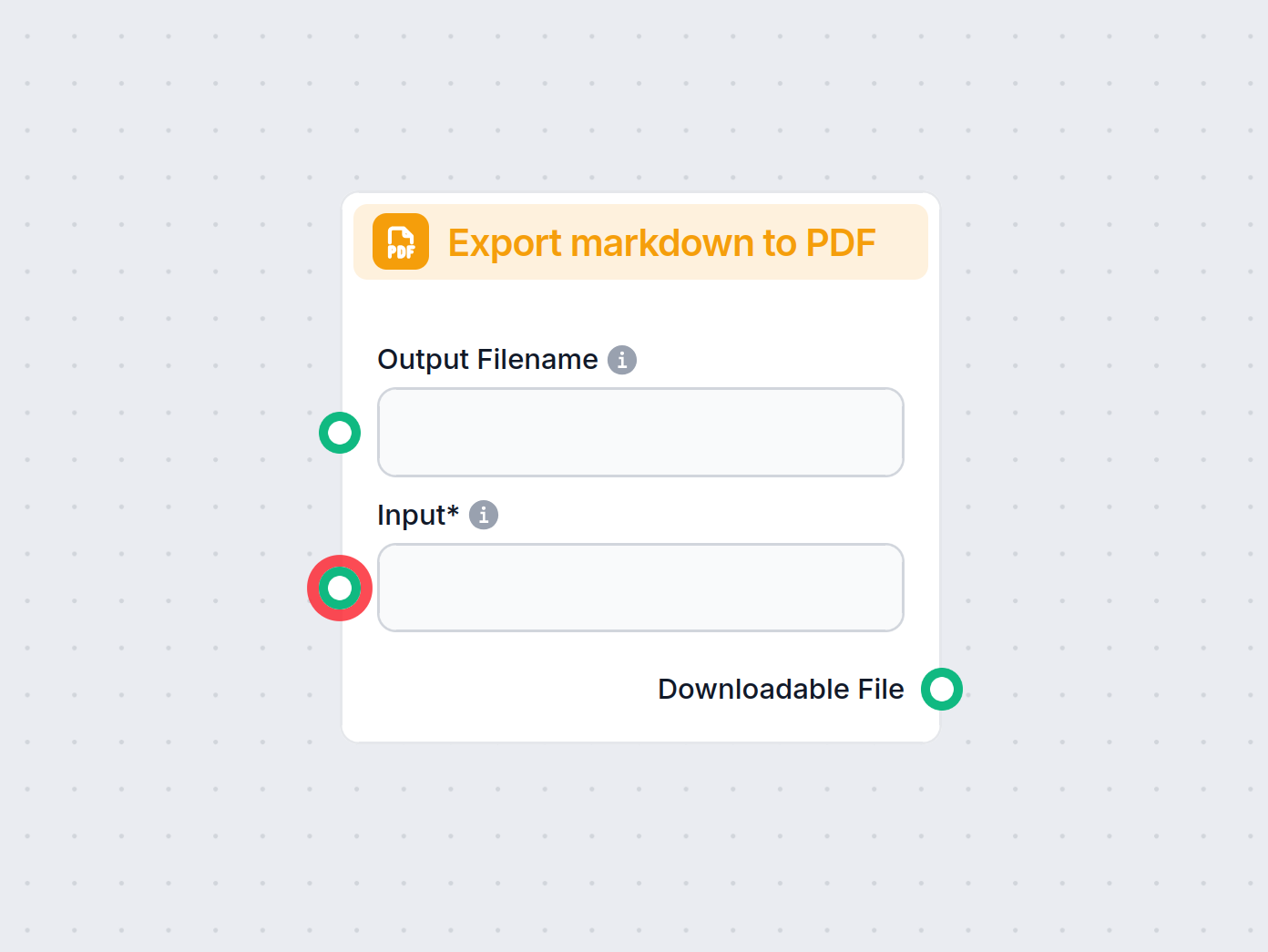
Wissensquellen-Widget
Zeigen Sie relevante Dokumente direkt in den Antworten Ihres Chatbots mit dem Wissensquellen-Widget an. Diese Komponente stellt ausgewählte Wissensdokumente als...

Verwandeln Sie strukturierte Daten mit FlowHunts Document to Text-Komponente in lesbaren Markdown-Text und profitieren Sie von anpassbaren Steuerungen für eine effiziente und relevante KI-gestützte Ausgabe.
Komponentenbeschreibung
AI can analyze large quantities of data in seconds, but only some of the data will be relevant or suitable for output. The Document to Text component gives you control over how the data from retrievers is processed and transformed into text.
The Document to Text component is designed to transform input knowledge documents into plain text format. This is particularly useful in AI and data processing workflows where textual data is required for further processing, analysis, or as input to language models.
This component takes one or more structured documents (such as HTML, Markdown, PDFs, or other supported formats) and extracts the textual content. It allows you to specify precisely which parts of the documents to export, whether to include metadata, and how to handle document sections or headers. The output is a unified message object containing the extracted text, ready for downstream tasks like summarization, classification, or question answering.
The component accepts several configurable inputs:
| Input Name | Type | Required | Description | Default Value |
|---|---|---|---|---|
| Documents | List[Document] | Yes | The knowledge documents to transform into text. | N/A (user provided) |
| From H1 if exists | Boolean | Yes | Start extraction from the first H1 header if present. | true |
| Load from pointer | Boolean | Yes | Start extraction from the pointer best matching the input query, or load all if not matched. | true |
| Max Tokens | Integer | No | Maximum number of tokens in the output text. | 3000 |
| Skip Last Header | Boolean | Yes | Skip the last header (often a footer) to optimize output. | false |
| Strategy | String | Yes | Text extraction strategy: concatenate documents or include equal size from each. | “Include equal size from each documents” |
| Export Content | Multi-select | No | Which content types to include (e.g., H1, H2, Paragraph). | All types selected |
| Include Metadata | Multi-select | No | Metadata fields to include in the output if available. | Product |
Content Types available: H1, H2, H3, H4, H5, H6, Paragraph
Metadata options: Author, Product, BreadcrumbList, VideoObject, BlogPosting, FAQPage, WebSite, opengraph
The component produces the following output:
| Capability | Description |
|---|---|
| Input Types | List of Documents |
| Output Type | Message (Text + Metadata) |
| Content Granularity | Select headers/paragraphs to include |
| Metadata Options | Select multiple metadata fields to export |
| Output Size Control | Set max tokens |
| Extraction Strategies | Concatenate or balance across documents |
| Section Selection | Start from H1, from pointer, or skip last header |
The bot may crawl many documents to create the text output. The Strategy setting lets you control how it utilizes these documents smartly while staying within the token limit.
Currently, there are two possible strategies:
This is a transformer component, meaning it bridges the gap between two outputs. Document to Text takes Documents outputted by the Retriever components:
The knowledge is converted into readable Markdown text as it passes through the transformer. This text can then be connected to components requiring text input, such as splitters, widgets, or outputs.
Here is an example flow using the Document to Text component to bridge the gap between the Document Retrievers and the AI Generator:
Die Komponente holt Wissen aus Retriever-Komponenten und wandelt es in lesbaren Markdown-Text um, der dann mit jeder Komponente verbunden werden kann, die Text als Eingabe akzeptiert.
Beginnen Sie mit dem Aufbau intelligenterer KI-Lösungen mit der Document to Text-Komponente von FlowHunt. Wandeln Sie Daten nahtlos in verwertbaren Text um und verbessern Sie Ihre automatisierten Workflows.
Zeigen Sie relevante Dokumente direkt in den Antworten Ihres Chatbots mit dem Wissensquellen-Widget an. Diese Komponente stellt ausgewählte Wissensdokumente als...
Die Komponente 'Exportieren in Datei' in FlowHunt ermöglicht es Ihnen, während Ihres Workflows generierte Texte oder Daten in herunterladbaren Dateien verschied...
Verwandeln Sie Text mit der Komponente 'Exportieren als PDF' in FlowHunt in fertige, herunterladbare PDF-Dateien. Konvertieren Sie nahtlos Markdown oder Klartex...
Cookie-Zustimmung
Wir verwenden Cookies, um Ihr Surferlebnis zu verbessern und unseren Datenverkehr zu analysieren. See our privacy policy.


